Fixing your home can be expensive, but it may be necessary to help increase your home’s value, make your home more accessible or let you repair unexpected damage. If you don’t have the savings to cover the cost, you can consider a range of different financing options. Learn more about how you can finance your home renovations or emergency repairs below.
Compare financing options for home improvement and repairs
| Loan provider | Interest rate | Loan amount | Loan term | Key features | Link |
|---|---|---|---|---|---|
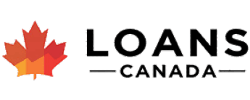 Personal loan | 8.99% - 35.00% | $500 – $50,000 | 4 - 60 months | Instant pre-approval | Go to site |
 Personal loan | 8.99% - 35.00% | $500 – $2,500 | 9 - 60 months | Instant pre-approval | Go to site |
 Personal loan | 9.99% - 35% | $500 – $35,000 | 6 - 84 months | Same-day approval and funding | Go to site |
Personal loan | 8.99% - 35% | $500 – $100,000 | 3 - 12 months | Approval and funding within 24-48 hours | |
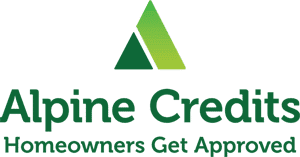 Home equity loan | $10,000 – $500,000 | Up to 60 months | Quick approval and fast funding | ||
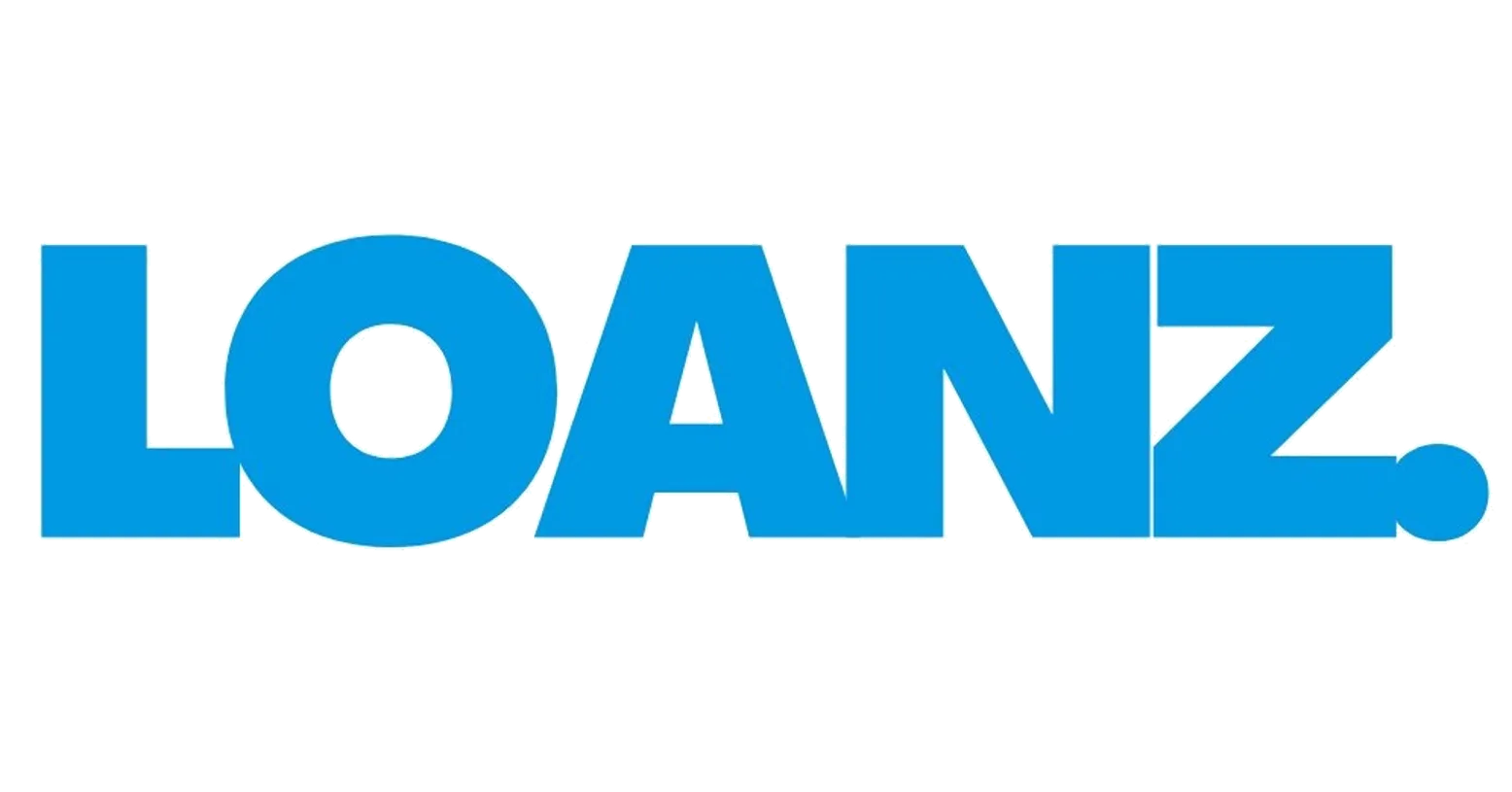 Personal loan | 29.90% - 46.90% | $1,000 – $15,000 | 12 - 60 months | Instant approval, funding in as little as 15 minutes |
9 ways to finance home improvement and repairs
We cover 9 different ways you can finance home improvements or repairs, with everything from a personal loan to in-store financing. Discover how these financing types work and what the pros and cons of each are.
1. Get a home renovation or repair loan using a HELOC
- How it works. A home equity line of credit (HELOC) is a revolving line of credit that’s secured by your home. You’ll get lower interest rates with a HELOC, but you could lose your house if you default on payments. Only borrow and pay interest on what you need for renovations, and keep the rest as an emergency fund. Once you make your repayments, you’ll get access to the credit you paid back.
- How much you can borrow. It will usually depend on how much home equity you have and what your credit score is. You may be able to borrow up to 65% of your home’s purchase price or market value with a home equity line of credit.
- How to qualify. Be a Canadian citizen or resident who is the age of majority in your province, meet credit score and income requirements, have an acceptable debt-to-income ratio and have a decent amount of equity in your home.
Pros:
- Qualify for large amounts with lower interest rates than traditional loans
- Get access to financing whenever you need it
- Only pay interest on the amount you take out
- Funds aren’t tied exclusively to home renovations
Cons:
- You risk losing your home if you default on your payments
- You’ll usually need to have significant equity in your home
- You may spend more than you need if cash is readily available
Features of home equity loan to finance home repairs
- How it works. A home equity loan is different from a home equity line of credit. With a home equity loan, you’ll borrow a one-time lump sum and pay interest on the full amount, rather than having access to a revolving pool of funds. The money you repay won’t be available to borrow again and if you want additional funds you’ll have to apply for another loan.
- How much you can borrow. You can borrow a home equity loan worth up to 80% of your home’s value, minus what you still owe on your mortgage. Your lender may move your maximum amount up or down based on your credit score.
- How to qualify. Be a Canadian citizen or resident who is the age of majority in your province, meet credit score and income requirements, have an acceptable debt-to-income ratio and have significant equity in your home.
Pros:
- Easier to qualify for than a regular personal loan if you have bad credit
- Apply for large amounts, worth up to 80% of the equity in your home
- Get lower interest rates than you would with an unsecured loan
- Use a broker to compare offers and get the best deal
Cons:
- You risk losing your home if you default on your payments
- Some lenders have strict eligibility criteria (such as minimum credit score or income requirements)
- Loans can come with additional fees, such as appraisal and title search fees
Features of personal loans for home improvement financing
- How it works. Similar to a home equity loan, with a regular personal loan, you’ll borrow a lump sum and pay interest on the full amount. The main difference is that you won’t lose your home if you default on your payments. Whether or not you qualify will depend more on your credit score, unless you secure your loan with another asset such as your investments.
- How much you can borrow. With most unsecured personal loans, you can borrow up to $50,000. You may be able to borrow more if you put an asset such as your savings or investment account on the line to secure your payments.
- How to qualify. Be a Canadian citizen or resident who is the age of majority in your province, meet credit score and income requirements, have an acceptable debt-to-income ratio and have equity in assets such as your savings or investment accounts if you choose a secured loan.
Pros:
- Choose from dozens of lenders
- Borrow large amounts, up to $50,000 or more in some cases
- Use a personal loan broker to compare rates to find the best deal
- There’s no need to own a home to access funds
Cons:
- Some lenders have strict eligibility criteria (such as minimum credit score or income requirements)
- It’s harder to qualify for home repair loans with bad credit
- You may pay very high interest rates if you manage to get approved with bad credit
4. Use a personal line of credit for home repairs
- How it works. Taking out a line of credit to finance home renovations will give you a more flexible pool of funds to borrow from. As you make repayments, the money becomes available for you to borrow again. Unlike with a HELOC, you won’t need to secure a regular line of credit with your home. Instead, your lender will use your credit score to decide if you qualify.
- How much you can borrow. With most personal lines of credit, you can borrow up to $50,000. The amount you qualify for will depend on factors such as your income and credit score.
- How to qualify. Be a Canadian citizen or resident who is the age of majority in your province, meet credit score and income requirements and have an acceptable debt-to-income ratio.
Pros:
- Get access to quick financing if your line of credit is set up in advance
- Qualify for large amounts, up to $50,000 in some cases
- Only pay interest on the amount you borrow
- Funds can be used for longer home renovation projects, or projects with unpredictable budgets
- There’s no need to own a home to access funds
Cons:
- Interest rates can be high if you have bad credit
- Lenders may have strict eligibility requirements (for example, minimum income or credit score requirements)
- You may spend more than you need if cash is readily available
5. Apply for a CMHC home improvement loan
- How it works. This program lets you qualify for a loan for up to 10% of what your home will increase by after you do your home improvements. For example, if your home increases to $550,000 after renovations, you can qualify to borrow $55,000 for improvements. The amount you borrow will be added to your mortgage. This option is only available before you buy your home.
- How much you can borrow. Qualify for up to 10% of your home’s value after you do renovations.
- How to qualify. Be a Canadian citizen or resident who is the age of majority in your province, have a credit score of at least 600, meet minimum income and equity requirements, have a maximum property value under $1 million and have an acceptable debt-to-income ratio.
Pros:
- Get funding to purchase a fixer-upper
- Qualify for up to 10% of your home’s value after you renovate
- Home renovation loan amount will be built into your mortgage
- Potential to qualify for larger amounts in multiple installments
Cons:
- Only available for new mortgages
- Quote from contractor is required before closing
- Funds will only be released when the contractor finishes their work
- Does not cover appliances or expenses to add another unit to the property.
6. Get home improvement financing through a store
- How it works. Many popular stores offer 0% or low interest financing options to help you pay for the products you want to buy. You’ll usually need to pay the amount you owe back in 6 to 36 months, and you may need good credit to qualify. If the store doesn’t offer a loan, you may be able to qualify for a store credit card.
- How much you can borrow. It depends on the store financing you apply for. Some stores will let you borrow a few hundred dollars while others will let you borrow several thousand dollars.
- How to qualify. Be a Canadian citizen or resident who is the age of majority in your province, meet credit score and income requirements, and have an acceptable debt-to-income ratio.
Pros:
- May be easier to qualify for than regular financing
- Some cards offer 0% financing for several months
- You might get rewards or incentives from the store
Cons:
- You may get a lower credit limit than you need
- It could be difficult to qualify with bad credit
- You may pay high interest rates once your promo period ends
Home renovation loan via store financing
| Store name | Features | What you can buy |
|---|---|---|
| Best Buy | No interest for 3, 6, 12 or 24 months through Fairstone, 31.99% interest after promo ends | Appliances |
| Canadian Tire | No fees and no interest for 24 months with the Triangle Mastercard | Tools, paint, lighting, appliances, sinks/faucets |
| Home Depot | Pay no interest for 12 months, 28.8% interest accrued after promo ends | Building materials, bathroom and kitchen supplies, tools, paint, lighting |
7. Get a home renovation loan through mortgage refinancing
- How it works. You can refinance your mortgage for a larger amount than what you owe and withdraw the difference as cash. You’ll need to get an appraisal to estimate your home’s value. Once you know how much your home is worth, you should be able to borrow up to that amount. Just be aware that your interest rates could go up when you refinance your home to get a cash-out loan.
- How much you can borrow. You can usually borrow the amount of equity in your home minus how much you owe on your mortgage. For example, if you owe $100,000 on your mortgage, but your home is worth $150,000, you can refinance for up to $150,000 and get $50,000 in cash. You then pay back $150,000 on your refinanced mortgage.
- How to qualify. Be a Canadian citizen or resident who is the age of majority in your province, meet credit score and income requirements, have an acceptable debt-to-income ratio and be able to get a home appraisal to show proof of equity.
Pros:
- Qualify for lower interest rates than with personal loans
- Borrow large amounts, based on the equity in your home
- Get more favourable rates and terms on your mortgage in some cases
Cons:
- You’ll have to pay closing costs
- You may have to foot the bill for a home appraisal
- Refinancing can take 15–45 days or more
- Your mortgage will take longer to pay off, or you’ll make higher payments
8. Use a low interest credit card to pay for home repairs
- How it works. You can apply for a low interest credit card to fund smaller home renovations. These cards usually come with low or no annual fees and interest rates between 8.99% and 12.99%. You may also be able to pay for home renovations with a regular credit card and transfer your balance to a balance transfer card with a 0% intro rate.
- How much you can borrow. You can borrow up to your credit limit. Depending on your credit score and other factors, you may qualify for anywhere from $500 to $15,000, or more depending on which credit card you choose.
- How to qualify. Be a Canadian citizen or resident who is the age of majority in your province, meet credit score and income requirements and have an acceptable debt-to-income ratio.
Pros:
- Low interest rates
- Reasonable annual fees (usually between $25 and $35)
- You could qualify for a 0% intro with some cards
Cons:
- You may get a lower credit limit than you need
- It could be difficult to qualify with bad credit
- It takes time to apply for a credit card and receive it in the mail (if you don’t already have one)
9. Apply for housing expense assistance
- How it works. Housing expense assistance can help borrowers cover their housing expenses such as rent or mortgage payments. These loans can’t typically be used for home renovations, though you may be able to find home repair loans for low income families. Visit 211.ca and select your province for more information on housing expense assistance.
- How much you can borrow. You may be able to borrow different amounts, based on which agency you borrow from.
- How to qualify. Be a Canadian citizen or resident who is the age of majority in your province, meet credit score requirements and show proof that you have low income.
Pros:
- More lenient eligibility criteria
- Lower interest rates
Cons:
- Usually reserved for rent or mortgage support
- Can be difficult to find
- Only available for low income borrowers
Did you know?
As part of the Canada Greener Homes Initiative, you can access the following types of funding for green home renovations:
- Grants. Apply for grants from $125 to $5,000 to cover a part of your eligible home retrofits. You may also apply for up to $600 for pre- and post-retrofit EnerGuide evaluations.
- Loans. Apply for interest-free loans of up to $40,000, with a repayment term of 10 years to help you undertake major home retrofits.
Where can I get home renovation loans in Canada?
You can get home renovation loans in Canada with banks, credit unions, private lenders and government programs.
- Banks. Best for good to excellent credit. These loans come from a trustworthy source and you can qualify for decent rates with good credit. That said, they usually have more strict eligibility criteria than other types of home renovation loans.
- Credit unions. Best for existing credit union members. These loans usually require you to sign up as a credit union member. They may come with slightly lower interest rates than banks and less strict eligibility requirements in some cases.
- Private lenders. Best for bad credit and online loans. These loans usually come with higher interest rates, but you can qualify for home repair loans for bad credit. They’re also typically more convenient than other financing options.
- Government programs. Best for lower cost loans. Many government programs let you borrow loans with better rates and terms. These loans are usually offered by regular lenders, in partnership with the government.
A closer look at bank home improvement loans
RBC home improvement loan
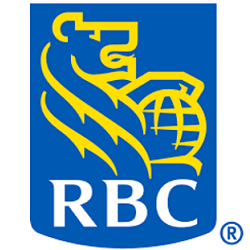
- RBC Homeline Plan. Manage your mortgage and a home improvement line of credit under one plan. You’ll need at least 20% equity in your home to qualify for this option.
- Royal Credit Line. A line of credit can be a good option if your renovations may take a long time, or you plan to reuse your credit after paying it off.
- Mortgage refinancing. Refinance your existing mortgage to get access to funding and take up to 30 years to repay.
- RBC personal loan. A personal loan could be ideal if you need the funds all at once and want a structured repayment plan.
- RBC Energy Saver Loan. Receive 1% off the loan interest rate or a $100 rebate on a home energy audit on a fixed rate installment loan over $5,000.
TD home improvement loan

- Personal line of credit. Borrow between $5,000 and $50,000, and get access to funds to use again as soon as you make your repayments.
- TD Home Equity FlexLine. Borrow up to 80% of your home’s value and make minimum monthly interest-only payments, as you see fit.
- Personal line of credit. Borrow between $5,000 and $50,000, and get a flexible repayment plan.
- Investment secured line of credit. Use your eligible investments to secure a line of credit between $5,000 and $200,000.
BMO home improvement loan
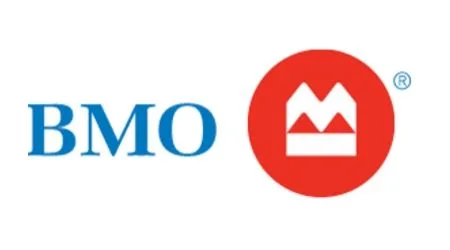
- BMO Home Equity Line of Credit. Borrow up to 65% of your home’s value, starting at $5,000, and borrow and repay funds on your own schedule.
- BMO Homeowner ReadiLine. This lending option lets you apply for both a mortgage and a line of credit at the same time.
- BMO Home Equity Loan. Tap into 80% of your home’s value to pay for large purchases, renovations and more.
CIBC home improvement loan
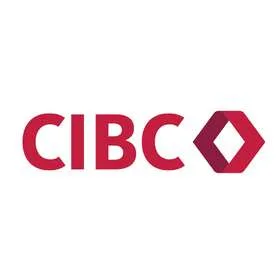
- CIBC Home Power Plan. Combine your mortgage with a line of credit to consolidate under one simple, low-interest and secured borrowing solution, which can be adjusted to help fund your renovation project and meet your future borrowing needs.
- CIBC Home Power Mortgage. Use this mortgage refinancing package to borrow a set amount for your home renovation or repairs.
- CIBC Personal Loan. Get a home renovation loan with a term up to 5 years.
- CIBC Personal Line Of Credit. This provides you with an open pool of funds that you can draw on at any time, with interest paid only on the amount you use.
Scotiabank home improvement loan

- The Scotia Total Equity Plan (STEP). This plan lets you choose from different Scotiabank credit products such as mortgages, lines of credit and credit cards, all with one easy application.
- Secured ScotiaLine personal line of credit. Borrow between $5,000 and $75,000 when you use your home as collateral.
What are the rates of home improvement loans?
You will pay between 6.99% and 35% in interest with unsecured home renovation loans. The rates you get will depend on factors such as your credit score, income and debt-to-income ratio. If you have a good credit score and a high income, you may qualify for lower rates. You could also qualify for lower rates by securing your loan with an asset or enlisting a cosigner.
Can I get a first-time home buyer renovation loan?
Unfortunately, the first-time home buyer incentive doesn’t extend to home renovation loans. This government incentive helps you pay for a certain percentage of your first-ever mortgage. In return, you’ll need to give the government a share of your home’s future equity. The government won’t allow you to bake any home renovations you need to do into this amount.
How to find the best home renovation loans
Consider the following factors when deciding whether a home improvement loan in Canada is the right fit for you:
- Loan amount. Figure out how much you need to borrow to fund your home renovations. In some cases, you may be able to use the equity in your home to qualify for larger amounts. Just make sure you can afford to pay back what you borrow.
- Interest rates. Compare multiple lenders to find the best rates. Secure your loan with an asset to bring your interest rates down or apply for government financing (such as a CMHC loan). If you only need a small amount, try a low interest credit card. Learn more about personal loan rates in Canada.
- Fees. Avoid lenders that charge extra fees for signing up, repaying your loan or making late payments. Go with a lender that works to keep your loan costs low.
- Repayment period. Pick a repayment term that works for your budget. Shorter terms come with higher monthly payments and less interest over time; longer terms come with lower monthly payments and more interest over time.
- Eligibility criteria. Find a loan that you know you can qualify for before you apply. There’s no use applying for a loan that’s out of your reach – and multiple hard pulls on your credit can bring down your credit score.
- Processing time. Some lenders can disburse your funds on the same day you apply or by the next business day. Other lenders may take several days or weeks to approve your application and disburse your funds. If you’re looking for an emergency loan for home repairs, there are options available but at higher rates.
- Company reputation. Look for a lender with a solid reputation for customer service. Check online reviews on sites like Google, TrustPilot and the Better Business Bureau.
Are there home repair loans for bad credit?
You can get home repair loans for bad credit by following the steps for applying with good credit. Just be aware that you may have fewer options for lenders and you’ll want to check that you meet a lender’s eligibility criteria before you apply.
The main downside of home repair loans for bad credit is that you’ll usually have to pay very high interest rates. That said, you may be able to get lower rates if you secure your loan with collateral (such as your home or vehicle) or sign up with a cosigner.
Pros and cons of home improvement loans
Pros
- Various loan options. Choose from a range of unsecured financing options including revolving lines of credit, credit cards and loans. You can also apply for secured credit by using your home as collateral.
- Increase your home’s value. Getting a loan for home renovations can increase the value of your house. This means more money in your pocket when it comes time to sell, though you won’t usually see immediate financial benefits.
- Make needed repairs. Use home repair loans to cover the cost of damage or fund preventative maintenance to avoid future costly repairs. Fixing issues early can end up saving you thousands of dollars in the long run.
Cons
- Can be expensive. Home improvement loans can come with high interest rates and they may also come with origination fees, closing costs and other fees that add to the cost of your loan.
- Risk of default. You may be unable to repay your loan if your project goes off budget. This could lead your credit score to go down, or you could risk losing your home if you’ve secured it with an asset.
- Limited use. Home improvement loans may be tied to your property, meaning you must use the funds to pay exclusively for home renovations and you may need to pay the loan off in full if you decide to sell your home.
What to avoid with a home improvement loan in Canada
You should avoid the following when taking out a home improvement loan in Canada:
- Borrowing too much. Only borrow the amount you need for your home renovations. Make a budget in advance to figure out how much you might need to pay. If you need funds on an ongoing basis, consider getting a home renovation line of credit.
- Taking the first loan offer. Shop around and compare rates from several lenders to ensure you’re getting the best deal. You should also watch out for hidden fees such as origination fees or closing costs.
- Overusing home equity. If you’re using your home equity to secure your loan, make sure you leave enough room to cover any unexpected expenses or emergencies if you need to borrow again.
- Making late payments. Make sure you can afford your loan before you take one out. The last thing you want is to miss payments, since this could bring down your credit score or leave you at risk of losing your home.
How to get a home improvement loan in Canada
Follow the steps below for how to get a home improvement loan in Canada:
- Apply for pre-approval. Apply for pre-approval with banks, online lenders and credit unions. Simply provide personal details such as your contact details, job, income and housing information to get the ball rolling.
- Pick the best personal loan. Compare the loan offers you get back and pick the best fit for your personal needs and budget. Consider loan features such as amount, length of term, fees and repayment requirements.
- Submit a formal application. Once you choose an offer, you’ll usually need to submit a more detailed application with that particular lender. You can upload or submit loan documents and banking information at this point.
- Submit to a credit check. For the most part, it’s not possible to get home renovation loans with no credit check. You’ll almost always be required to submit to a credit check since your lender will use your score to decide what interest rates you should pay.
- Get a final loan offer. Review your loan agreement carefully. Make sure you fully understand the terms and cost of your loan, and keep an eye out for extra fees.
- Sign and submit. Sign and submit your loan agreement if you’re happy with your contract. With a personal loan or line of credit, you’ll usually get your money via e-Transfer or direct deposit.
Eligibility requirements
Requirements may vary between lenders, however the criteria usually include:
- Be 18 years of age, or the age of majority in your province or territory
- Be a Canadian citizen or a permanent resident with a valid Canadian address
- Have a working bank account
- Meet credit score and income requirements
- For secured loans: Own a home and have a reasonable level of equity in it
Required documents
To apply for home renovation loans in Canada, you may need the following documents:
- Identity documents. Government-issued ID such as your passport or driver’s licence. Some lenders also require you to provide your Social Insurance Number.
- Proof of income and employment. Pay stubs, employment records, bank statements or tax documents.
- Debt-to-asset ratio. Lists of assets and debts to make sure you can qualify for funding.
- Home appraisal for secured loans. Documentation that verifies the market value of your home and how much equity you have in it.
What credit score is needed for home renovation loans?
When determining how to get a home renovation loan, your credit score should be the first thing you look at. You’ll usually need a credit score of 660 or above to qualify for most loans. Any score below 660 may be considered as fair or bad credit, which could make it more difficult to qualify (or extremely expensive). You can apply to find out your credit score from one of Canada’s major credit bureaus, such as Equifax or TransUnion. Check your credit score.
How much do home improvements cost?
Learn how much you can expect to pay for standard home improvements in Canada:
| Improvement | What it involves | Average cost |
|---|---|---|
| Adding square footage | Remove walls to expand the interior of a home or apartment. | $80 to $200 per square foot |
| External siding | Replace siding to insulate and protect the exterior of the home. | $3 to $11 per square foot |
| Foundation repair | Fix cracks, water damage, issues with settling or sinking and bowing wall repair. | $250 to $15,000, depending on severity of damage |
| Drywall | Fix holes, stress cracks and water damage/mold. | $60 to $90 an hour for drywall repair |
| Retaining wall | Build a retaining wall for gardens, dividing property and other purposes. | $45 to $60 per square foot of wall |
| Stairs or railings | Construct a staircase, repair stairs or newel posts, sand and seal wood finishes. | $250 to $10,000 |
| Roof repair | Replace a roof completely, repair shingles, fix skylights or prevent leaks. | $500 to $15,000 |
| Basement remodeling | Put down a floor, build walls, install electric and plumbing lines. | $5,000 to $50,000 |
| Plumbing | Hire a plumber to replace old pipes or install new plumbing systems. | $58 to $260 per hour + materials |
| Electric work | Hire an electrician to redo part of your wiring. | $65 to $130 per hour + materials |
| Furnace and installation | Purchase a new furnace and get it installed. | $3,500 to $5,500 |
| Deck | Build a small deck or wrap around, with cost of materials. | $2,200 to $8,800 |
| Garage door | Garage door replacement, installation, disposal or repair. | $785 to $2,300 |
| Permits | Get permission to start construction. | $50 to $300 for small jobs, $500 to $2,000 for larger jobs |
| Solar energy | Buy and install solar panels | $10,000 to $16,000 |
3 tips to prepare for an emergency home repair
Keep these tips in mind if you want to prepare in advance for an emergency home repair.
- Keep a list of contractors. Storing numbers in your phone is smart, but write down a list of contractors in your area and stick it in your wallet or purse as a back up. Look for contractors on call 24/7 in case of emergencies.
- Call your insurance provider. Contact your insurer to confirm what’s covered by your policy and what you’re responsible for. After an emergency, most insurers send an assessor to look over the damage and let you know how much you’re covered for, but it helps to know before so you can think about financing should you need it.
- Know your disaster relief options. Ask your local government office about potential grants and other forms of disaster assistance so that you know how and what to apply for if the need arises.
How much home renovation loan can I afford?
When determining how much home improvement loan you can afford, you’ll need to think about factors such as your credit score, income, debt-to-income ratio and the value of your home. Usually, the higher your credit score and income, the more loan you can qualify for. You may also qualify for more money if you have a high amount of equity in your home.
Example: Jan finishes his basement
Jan has around $10,000 set aside to refinish his basement. As the project progresses, he realizes he’s over budget and needs another $9,000 to pay for contractors and supplies. With an excellent credit score of 810, Jan heads to his bank and is approved for $10,000. He uses the extra $1,000 as an emergency fund to cover any unexpected expenses.
| Loan amount | $10,000.00 |
| Loan type | Personal loan |
| Interest rate | 5.00% |
| Loan term | 2 years |
| Additional fees | Origination fee of 3.00% ($300.00) |
| Monthly payment | $438.71 |
| Total loan cost | $10,729.13 |
*The information in this example, including rates, fees and terms, is provided as a representative transaction. The actual cost of the product may vary depending on the retailer, the product specs and other factors.
Can I get a home repair loan if I have low income?
You may be able to get a home repair loan if you have low income, especially if you have a good to excellent credit score. You can compare the eligibility requirements of different lenders to see if your income is high enough to qualify. You may also be able to apply for home repair loans for low income families through government programs.
If your income isn’t high enough to qualify, you may want to consider other options. These could include using a credit card, borrowing money from family or friends, starting a GoFundMe or building up your credit score so that your income is less important on your loan application.
Frequently asked questions
More guides on Finder
-
5 Loans Like Spring Financial
Spring Financial is a popular alternative lender, but it’s not your only option if you need quick online funding.
-
10 Loans Like Lamina to Get Fast Funding
Check out these options if you’re looking for loans like Lamina.
-
Loans Like Money Mart to Get Fast Funding
Compare lenders that offer quick loans like Money Mart.
-
$2,500 Installment Loans for Bad & Good Credit in Canada
Find out where you can apply online for $2,500 installment loans in Canada, even with bad credit.
-
Loans During or After a Consumer Proposal
Compare loans for people in a consumer proposal and learn how to qualify for funding.
-
Basement finishing costs & financing
You could spend anywhere from a few thousand dollars to over $50K.
-
A–Z List of Lenders in Canada: Private Lenders, Banks & Credit Unions
Read our list of personal loan lenders in Canada to help you find the right loan.
-
Pension Loans in Canada: Payday, Bad Credit & No Credit Check Loans
Find out how to get a personal or payday loan if you receive a pension.
-
Loans for Vet Bills: Funds in 1-24 Hours
Read on and find out how to get a loan to take care of your sick pet.
-
Emergency loans in Canada: Funds in 1-24 hours
Compare lenders that provide emergency loans in Canada in as little as one hour.

